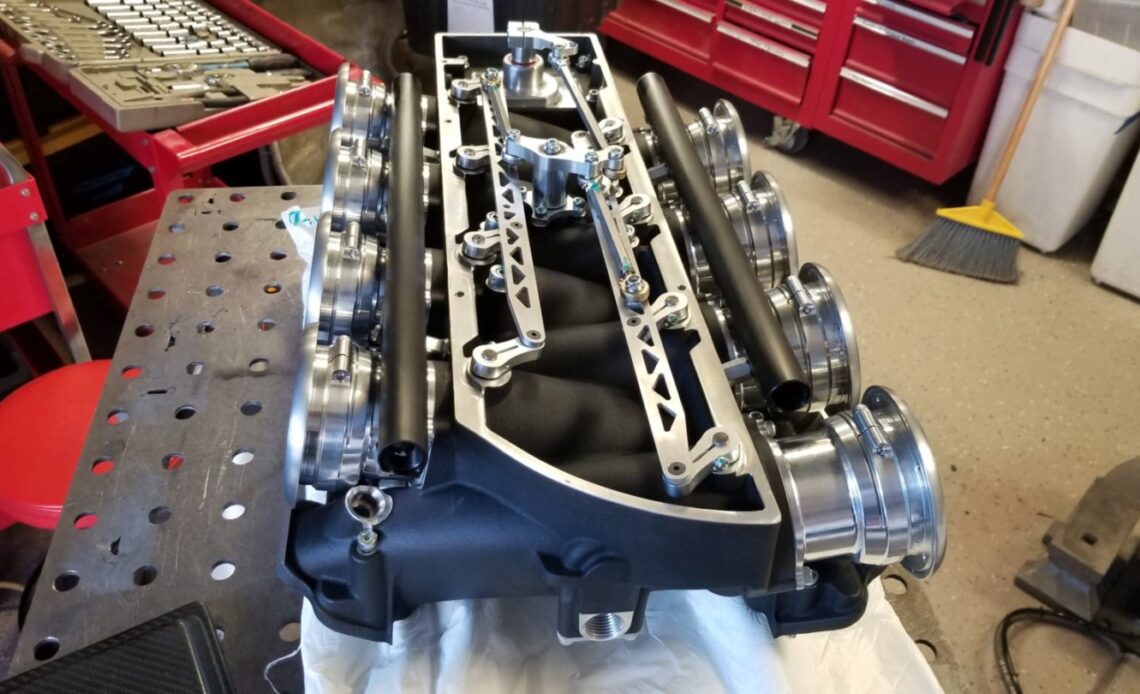I think it’s safe to say that most high-performance automotive enthusiasts like boost. However, there’s something to be said for the unreal sounds, power, and throttle response that comes with a high-horsepower naturally aspirated engine that can rev to the moon. Harrop Engineering of Preston VIC, Australia, can more than satisfy either desire. To showcase that ability, the guys from Harrop USA showed up to the PRI trade show this year with its Hurricane individual throttle body (ITB) intake for LS engines.
Harrop Engineering had many of its roots superchargers on display during the PRI trade show, but it was the Hurricane ITB intake on the right that caught our attention.
Harrop has done a fantastic job of building a great reputation for its roots-style superchargers, but the Hurricane ITB intake is the thing that caught our attention at the PRI show. Expertly crafted by the engineering team, this intake looks like it’s just begging to be run at wide-open throttle. From the eight individual throttle body trumpets milled from aluminum to the carbon fiber lid that hides the throttle linkage, the Hurricane intake is a work of art as much as it is a high-performance part.
Speaking of the carbon lid, although it looks fantastic and serves a purpose, I would be hard-pressed to leave it off and expose the mechanical framework-looking linkage that keeps all eight butterflies in step with one another. The linkage looks every bit as cool as the outside of the intake manifold.
With or without the carbon lid, the Hurricane ITB intake looks amazing. Photo courtesy of UMI Mechanical.
Not only is the Hurricane intake easy to stare at for extended periods of time, but it has a few tricks up its sleeve to help it perform even better than it looks. First, it uses a standard drive-by-wire LS throttle. That means this intake can be used on almost any LS application. There is also an option for using a traditional cable-operated throttle if you so choose. Second, the individual intake runners share a small common area on the underside of the manifold. Not only does this provide for a single pressure tap for the MAP sensor, but it ensures that each runner is balanced to the others at low RPM and idle. This makes the engine perform well while driving at low speeds well below wide-open throttle, which is an issue that has plagued other’s ITB setups of the past.
The Harrop Hurricane ITB looks even better installed on this 427 cubic-inch LS engine.
So how does the…
Click Here to Read the Full Original Article at DragzineDragzine…

